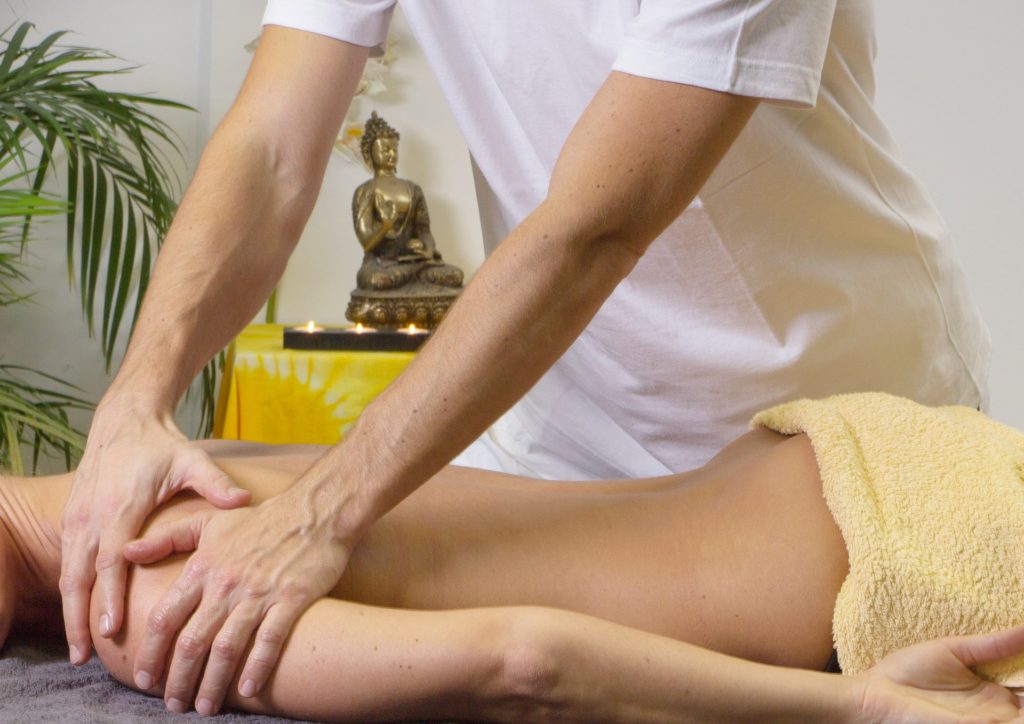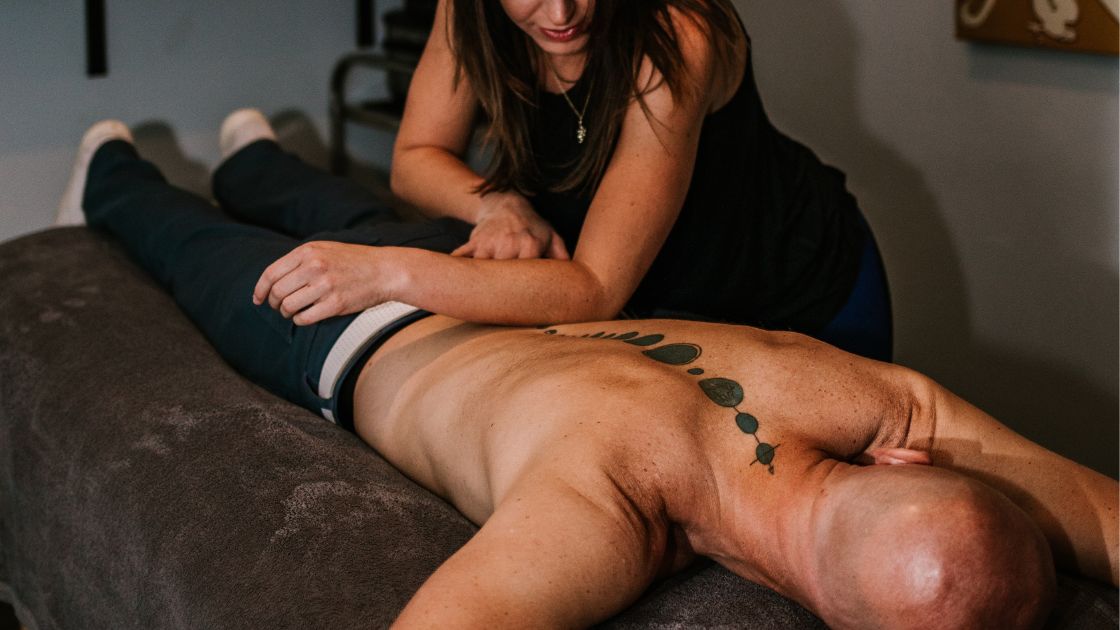Are Deep Tissue Massage and Deep Pressure Massage the Same Thing?

Are deep tissue and deep pressure massage the same thing?
No! Deep tissue massage and deep pressure massage are not one in the same and knowing the difference is very important! So let’s dig a little deeper into this issue! Pun intended.
No Pain, No Gain?
Hi, I’m a massage therapist and I specialize in deep tissue massage (DTM). On occasion, I encounter individuals who have the concept DTM all wrong. I hope they are the ones reading this right now.
When I’m giving my clients their pre-consultation before the start of a session, the last thing I say before leaving the room is something along the lines of “be sure to let me know if you need more or less pressure at any time during the massage”. And every so often, I will have a client who responds to me with “No pain, no gain!” or “I know I’m going to hate this (and you), but it will be so worth it later!”
But that’s a common misconception about this modality — you’re not supposed to dread the idea of a DTM and then go ahead and get one anyway! Do you know how many times I have watched people twinge on my table and then try to convince me that they don’t want me to ease up the pressure? If the pressure is causing you to twitch, then you’re not receiving the benefit that the therapy is intended to provide.
So let’s elaborate on why you shouldn’t allow yourself to accept such unnecessary pain when you’re supposed to be healing yourself!
Deep Tissue Massage vs Deep Pressure Massage
This main difference between the two is that while DTM accesses deeper layers of muscle, deep pressure massage is simply pushing harder.
DTM is all about working the sub-layers of muscle and fascia in order to correct an area of dysfunction. The strokes of pressure should be slow paced and careful, allowing the “knotted” muscles to respond and release on their own. Yes, DTM can be uncomfortable; in addition to gliding over those rough knots, your therapist is likely going to come across some trigger points here and there. If you’ve ever had trigger point therapy, you know that getting those sharp spots to relax can be a little intense!
But in regards to deep tissue, there is a difference between hurting so good and putting yourself through intolerable pain. If you’re instinctively feeling a sense of relief while simultaneously experiencing some dull aching during your massage, that’s good pain! But if you’re feeling sharp, hot, or crushing pain and can’t wait for the massage to be over, that’s not what you’re supposed to be getting from this — that’s bad pain! While it’s normal for the body to ache for a day after DTM, you don’t want to feel like you’ve just been hit by a truck or, in a really bad case, wake up with bruises.
Benefits of Deep Tissue Massage
Benefits of DTM include easing muscle tension, enhancing mobility, improving blood circulation, and reducing emotional stress. Forceful pressure can do just the opposite of what DTM aims to accomplish. When your body tenses up, your muscles are naturally resisting the pain and pushing back against the excessive pressure; not allowing the knots to relax themselves and heal. So remember, the difference is important and you’re the one in control of your selfcare.
Now that you have this information, here are some things you should keep in mind when you schedule a DTM appointment:
- There’s really no such thing as a full-body DTM.
- If your therapist was going to provide DTM to every muscle in your body, that would take up approximately fifteen hours of your day. Multiply the price of a massage by fifteen. And then think about the wellbeing of your massage therapist.
- Choose a specific area of your body that you feel would benefit most from DTM.
- Speak up if the pressure is too intense
- I can’t emphasize this enough. You might be thinking that the massage therapist is the expert and that you shouldn’t question what he/she is doing. Therapists might be able to read body language, but they can’t read your mind.
- Every client has a different threshold for pain. The pressure your therapist is using might feel amazing to one client but agonizing for another. Don’t agonize — speak up!
- Different parts of your body can tolerate different levels of pressure
- The upper half of your body might be able to take a good amount of pressure, but then your therapist uses the exact same pressure on your legs and you find yourself resisting. This is normal and your therapist can always adjust to your preferences.
So there you have it! Be kind to your body and don’t confuse deep tissue massage with deep pressure massage!
Written by: Katrina Jenkins
Photo Credit: Pixabay





